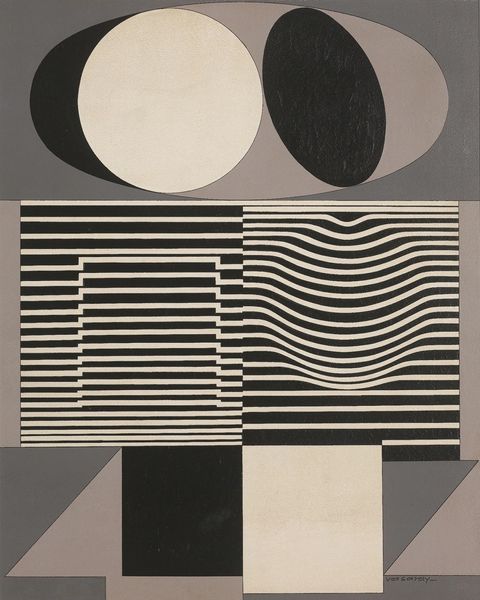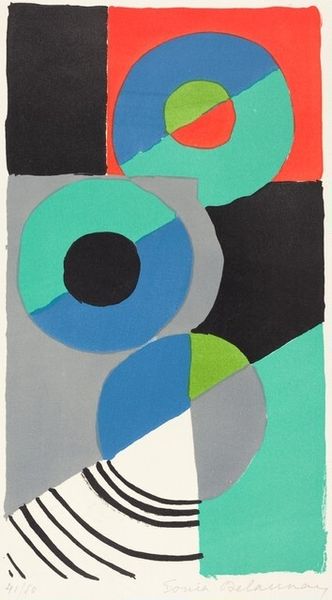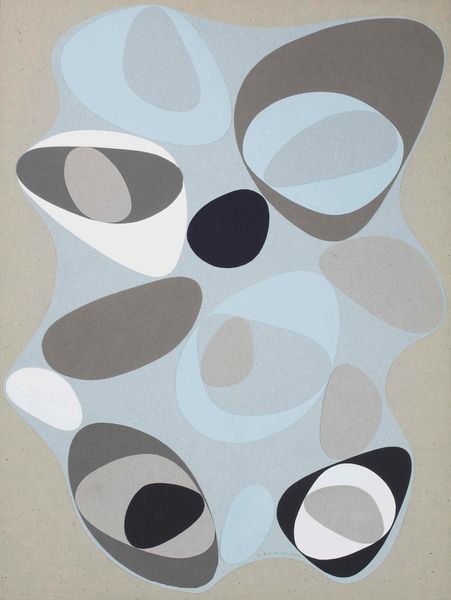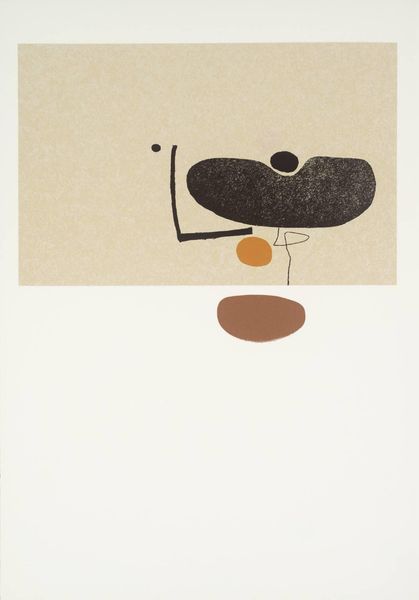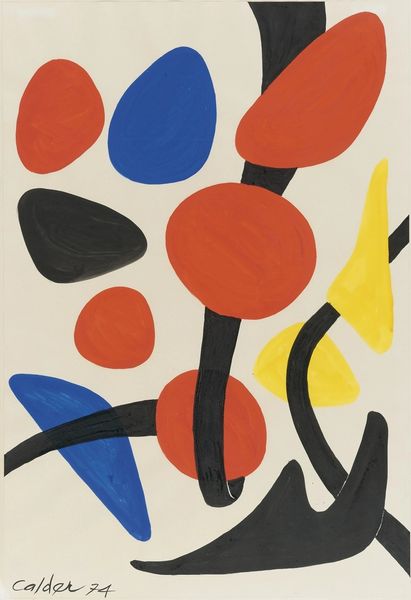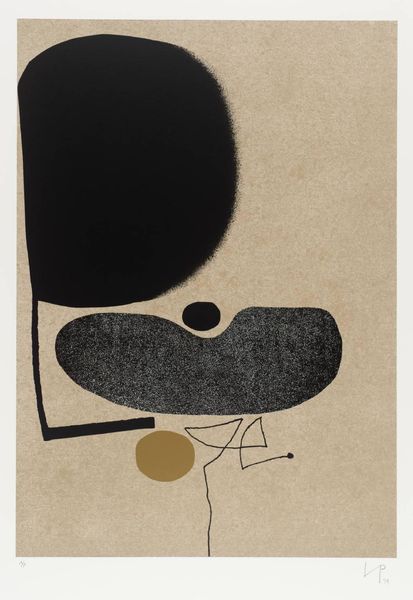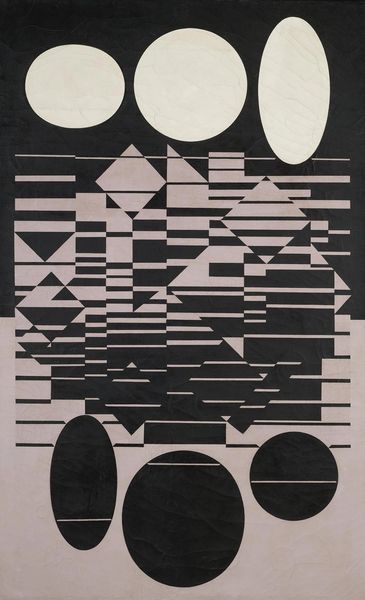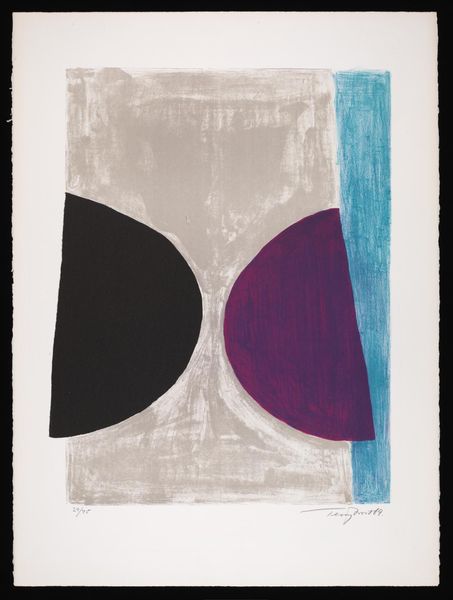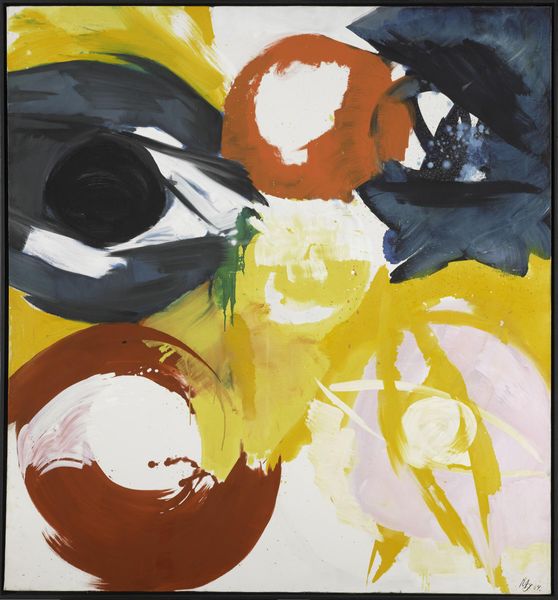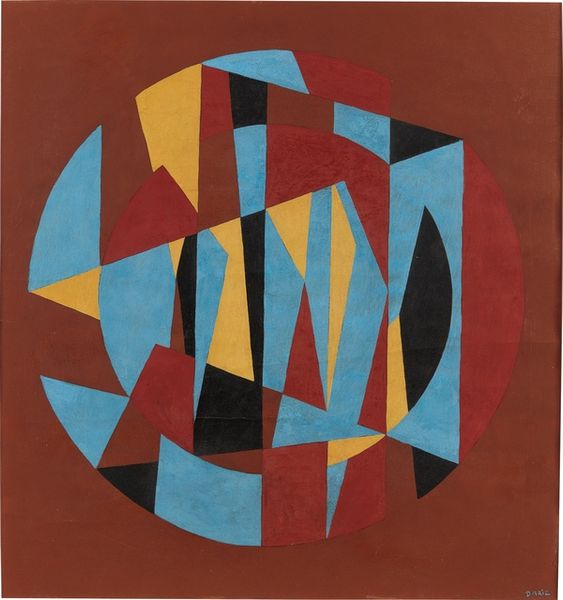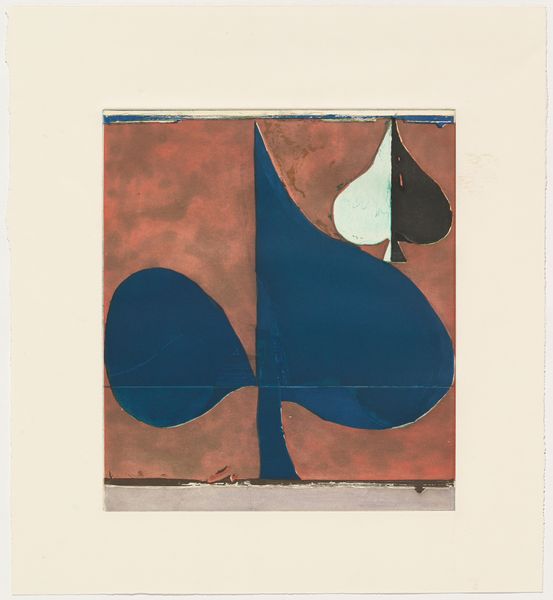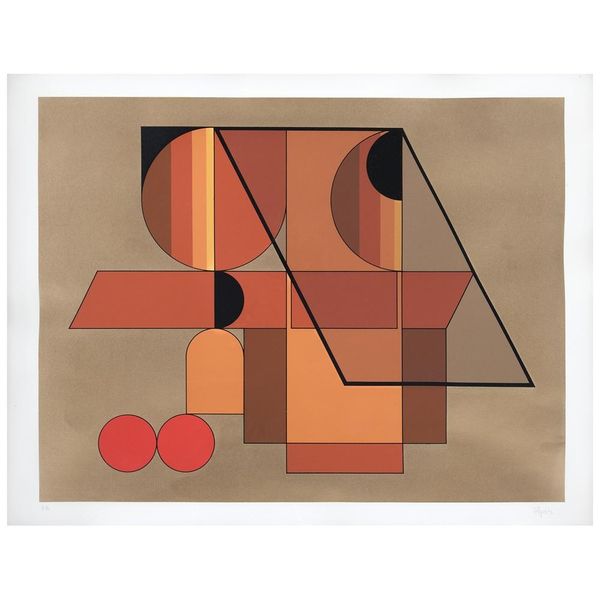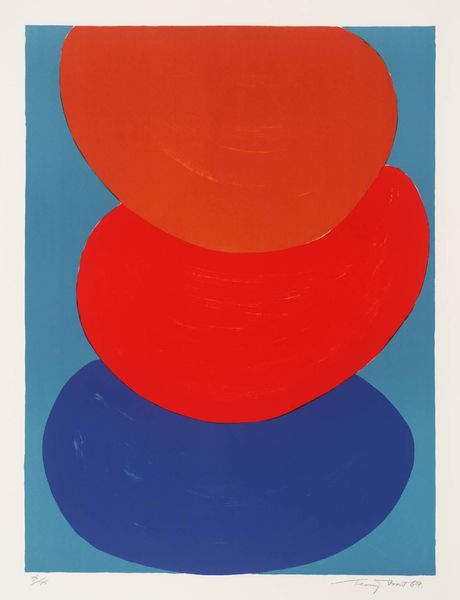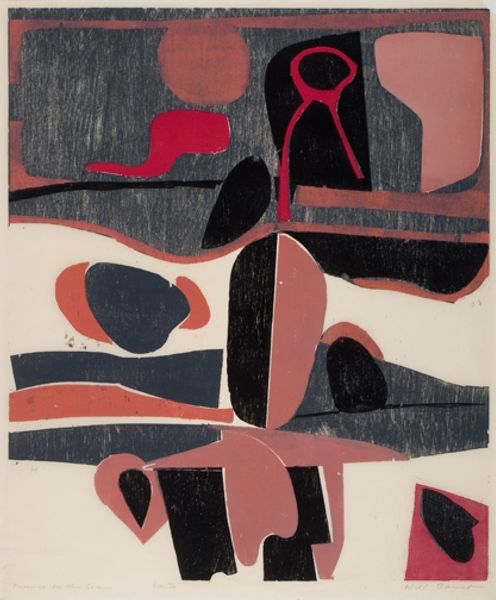
drawing, mixed-media, print
#
17_20th-century
#
drawing
#
mixed-media
# print
#
form
#
geometric
#
abstraction
#
line
#
bauhaus
#
modernism
Copyright: Public Domain
Editor: We’re looking at László Moholy-Nagy’s "Grey Overlappings" from 1930, currently housed at the Städel Museum. It’s a mixed-media piece; a print or drawing made with combined techniques. At first glance, I am drawn to the playful arrangement of shapes and lines—but there is a melancholy in the muted colors. How do you interpret this work? Curator: Oh, I love how you've keyed into that melancholic playfulness! To me, it feels like peering into a futuristic machine trying to recall a simpler time, perhaps through old blueprints and discarded candy wrappers. Notice how the geometric forms—circles, triangles, planes—interact. They aren't just shapes; they are symbols of the machine age clashing with an organic, almost human element in their haphazard placement. The red and yellow pops provide a desperate joy amid the greys. What do you make of the diagonal lines in the background? Editor: They remind me of rain, or perhaps light streaks, adding another layer of visual complexity and energy. The "machine age" aspect definitely resonates, but I can’t shake the feeling that this is also about memory…fuzzy, fragmented. Curator: Precisely! Moholy-Nagy was deeply embedded in the Bauhaus movement, which sought to unify art and technology. But what if technology dreams? What if it remembers, or misremembers? I imagine him sketching possible futures while longing for past realities—fusing both longings here. Editor: I now appreciate how the overlapping elements represent not just shapes but ideas and feelings in dialogue. It is not static, but a work in motion. I get the melancholic machine, now. Thanks for walking me through that. Curator: My pleasure! And isn't that the beauty of art? It morphs depending on who is viewing it, shaping our experience while reflecting our internal state. The dialogue goes both ways, I suspect.
Comments
stadelmuseum about 2 years ago
⋮
Inspired by Russian Constructivism, Moholy-Nagy devoted himself exclusively to abstraction from the 1920s onwards. Drawn with the aid of a ruler and compass, the lines and shapes create a precise scaffolding for the composition, while the raw paper lends it vibrant structure. The geometrical forms overlap and their colour gradations suggest spatiality and transparency. Moholy-Nagy believed that 'mathematically harmonious shapes, executed precisely, … represent the perfect balance between feeling and intellect'.
Join the conversation
Join millions of artists and users on Artera today and experience the ultimate creative platform.
